Recent Articles
Popular Makes
Body Types
2017 BMW 2-Series Road Test and Review
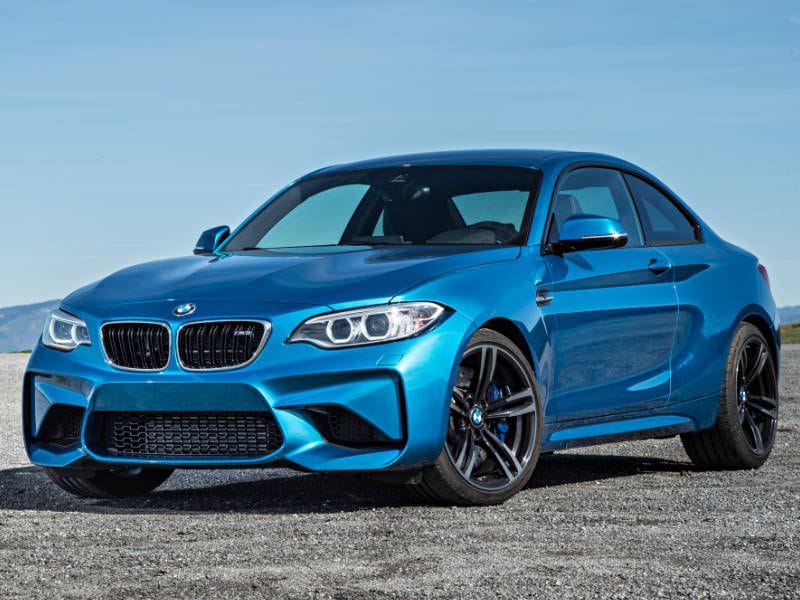
2017 BMW M2 front quarter ・ Photo by BMW
BMW invented the luxury performance coupe back in the late 1960s. In 1971, it increased the model's engine displacement to 2.0-liters and the BMW 2002 became an instant classic, establishing the German brand in America and locking in its fun-to-drive reputation. The dynamic 2017 BMW 2 Series, also powered by a 2.0-liter four cylinder engine, continues that legacy.
Available as a two-door coupe or convertible, the 2017 BMW 2 Series is the brand's smallest and most affordable model. It slots in underneath the larger and more expensive 4 Series and 6 Series coupes in BMW’s extensive lineup, and it costs a few hundred dollars less than the BMW 3 Series sedan, which uses the same turbocharged engines.
Built in Germany, the 2 Series is a consistent favorite in the extremely competitive small luxury coupe and convertible segments, where it successfully competes against the Mercedes-Benz CLA and C-Class, Audi A3 and A5, Lexus RC and Cadillac ATS.
Let's take a closer look at the 2017 BMW 2 Series.
Models and Pricing
The 2017 BMW 2 Series is available in two varieties, 230i and M240i. Prices start at $34,145, including $995 for destination and handling, for a 230i Coupe with rear wheel drive like our test vehicle. An 8-speed automatic transmission is standard. The more powerful M240i starts at $45,445, also with rear wheel drive and the 8-speed automatic.
The convertible models, which have power-operated soft tops, cost significantly more, $39,945 for the 230i and $50,045 for the M240i. All-wheel drive adds $2,000 to the MSRP of any model, and a 6-speed manual transmission is available on two-wheel drive models at no extra charge.
If you want hybrid or diesel power, you have to step up to the 3 Series. Under the hood of a 230i is BMW’s silky smooth and powerful 2.0-liter turbocharged four-cylinder engine. It makes 248-hp, which is strong for this class. The M240i, however, is quite a bit stronger. Its 335-hp 3.0-liter inline six cylinder engine is also turbocharged.
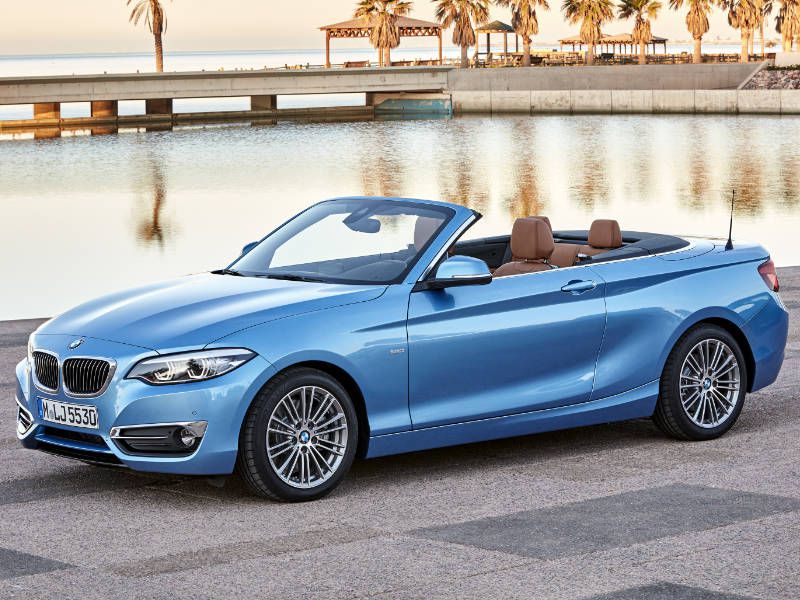
Photo by BMW
Don't Forget the M2
If real high-performance is what you’re after, don’t forget about the 2017 BMW M2. Little brother to the more infamous M3 and M4 models, the 365-hp M2 is the most powerful, most expensive and undeniably the most hedonistic 2 Series available.
BMW’s M division is the brand’s in-house tuner or hot rod shop. It competes head to head with AMG at Mercedes-Benz and less known programs like F at Lexus and the high-performance V cars from Cadillac. High-performance M models, like the 2017 M2, are standalone high-performance models tuned on the world’s racetracks including Germany’s legendary Nurburgring.
The M2 is available as a rear-wheel drive coupe only. It’s powered by a twin-turbocharged 3.0-liter 6-cylinder engine strong enough to get the little coupe to 60 mph in just 4.1 seconds. The M2 comes standard with a 6-speed manual transmission, but a 7-speed dual clutch automatic, which BMW only uses in its M cars, is available for $2,900.
Flared and festooned bodywork, more aggressive suspension tuning and oversized wheels and tires are also part of the M2 package. Prices start at $53,495, which is almost $15,000 less than an M4 Coupe.
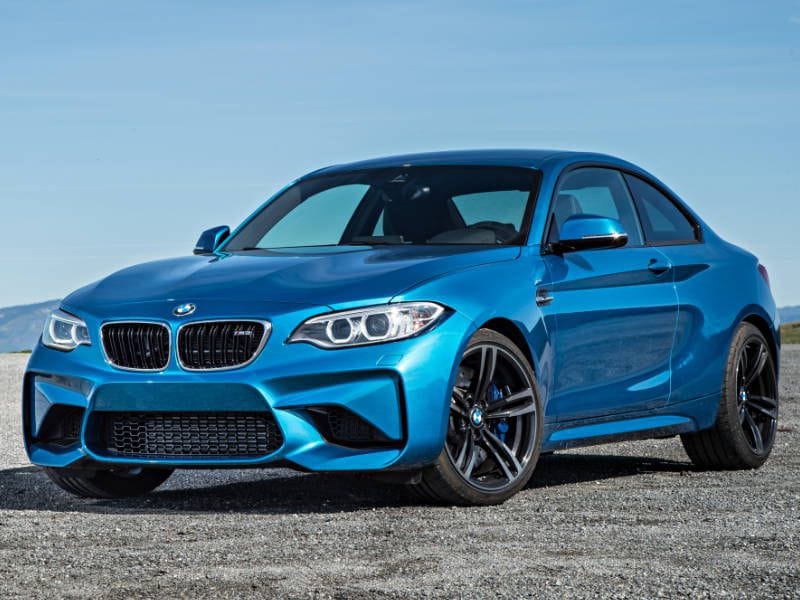
Photo by BMW
230i Coupe
Our rear-wheel-drive 230i Coupe test vehicle lived up to BMW’s fun-to-drive reputation. It proved to be agile and responsive, and its steering allows you to feel the road. The turbocharged four-cylinder doesn’t sound great at idle, but it likes to rev out to its lofty 7,200-rpm redline and it makes more than enough power to stimulate. The 8-speed automatic transmission is one of the best, but the precise 6-speed manual in our test vehicle added to the car's sporty nature.
A 230i, like our test vehicle, is quick, running from 0-60 mph in about 5.3 seconds, but the M240i can rocket to 60 mph almost a full second quicker. And with the off the line traction of the available all-wheel drive BMW says that number drops to 4.2 seconds.
It feels quick and sporty around town but manages to provide a supple ride. The 2 Series also feels better the harder you push it especially in Sport and Sport+ modes, which quicken the throttle response. Sport+ also stiffens the suspension for increased handling, but compromises ride quality.
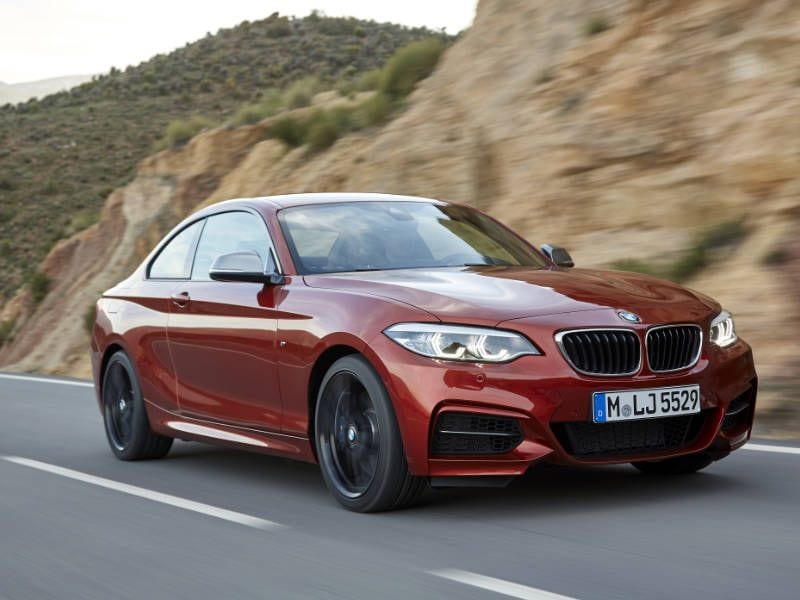
Photo by BMW
Interior Pros and Cons
There’s an overall feeling of quality to the interior of the BMW 2 Series. The high-quality materials and precise panel fitment feel right at this price. Unfortunately, the design is a little stoic. It’s attractive and everything feels expensive but it’s just not very exciting. Even the gauge cluster is so simple and functional it’s almost boring.
There’s a 6.5-inch screen in the center of the dash and BMW’s iDrive infotainments system is one of the best. Visibility is good, and the outside mirrors are well-sized. The heated front seats in our test vehicle were comfortable but lacked a little lower thigh support. The driver’s seat is height adjustable for shorter drivers. A standard tilt and telescopic steering wheel makes it easy to find the right driving position. The back seat is tight if you’re over six-feet tall and it only seats two. It’s surprisingly comfortable with rear air conditioning vents and adjustable headrests.
Standard features include Bluetooth, a 7-speaker audio system and BMW Driving Dynamics Control with Eco Pro, Comfort, Sport and Sport+ settings. Onboard wifi, which is standard on the Audis and the Cadillac, is available.
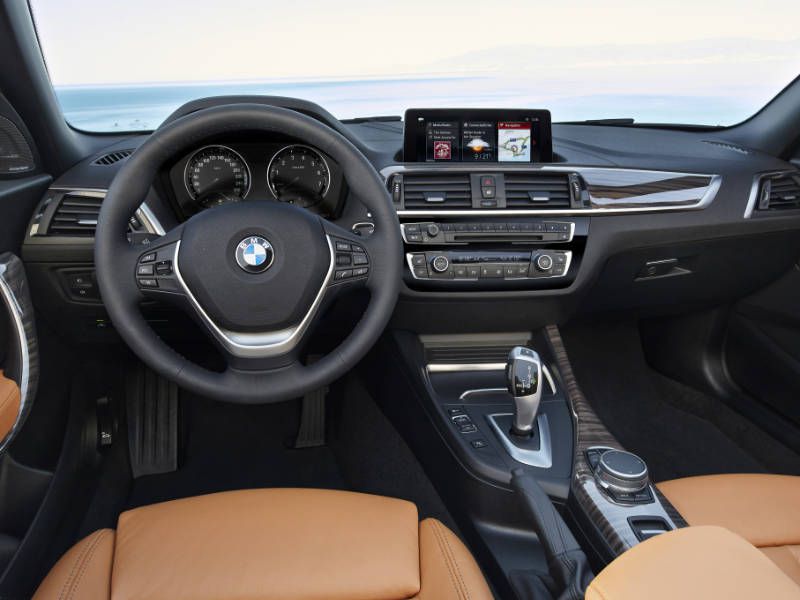
Photo by BMW
Generous Cargo and Cupholders
Cargo capacity is large for the class. The 2017 BMW 2 Series Coupe offers 13.8 cubic feet of trunk space. If more is needed it comes standard with a 60/40-split fold-down rear seat, which are easily folded flat for longer items. Although there’s more than enough space for your golf bag or a sizable grocery run, your surfboard or mountain bike will need to be roof racked. The Convertible’s trunk a bit smaller at 11.8 cubic feet, but fold the top and it shrinks to 9.9 cubic feet.
Storage inside the BMW’s interior is not quite as generous. The center console bin is shallow although the door pockets are large and have slots for water bottles.
The two front-seat cupholders, are large, but those tall drinks can interfere with the switchgear for the radio and climate controls. There are no rear-seat cupholders.
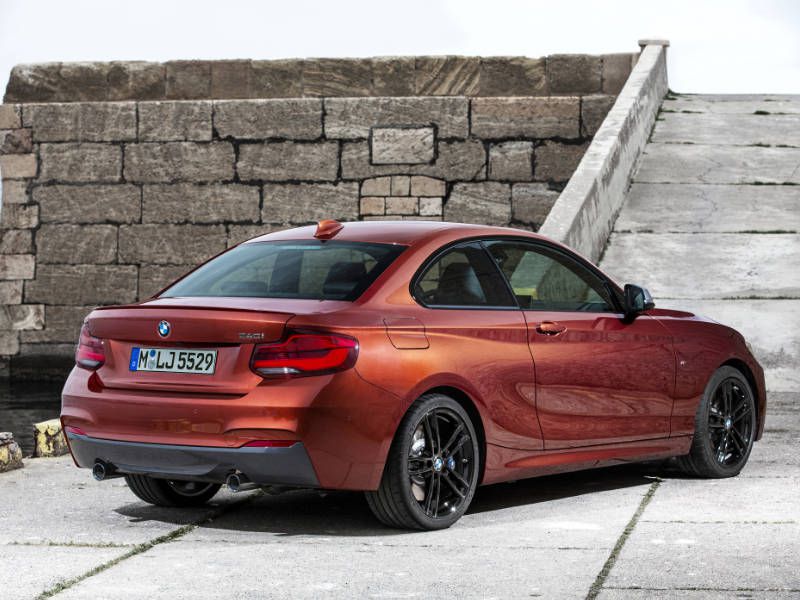
Photo by BMW
Fuel Economy and Safety
Overall, fuel economy is good for this class. The 230i is the most fuel-efficient of the range, rated 21 mpg city and 32 mpg highway with the 6-speed manual and 24 mpg city and 35 mpg highway with the 8-speed automatic. I averaged 27 mpg during a week of mixed driving. All-wheel drive drops the highway mpg rating to 33 mpg.
The significantly more powerful M240i is rated 19 mpg city and 28 mpg highway with the 6-speed manual and 21 mpg city and 32 mpg highway with the 8-speed automatic. The muscular M2 is rated 20 mpg city and 26 mpg highway.
In crash testing, the 2 Series has done well. It’s rated a Top Safety Pick+ by the Insurance Institute for Highway Safety (IIHS). Younger families will appreciate the BMW’s easy to reach LATCH connectors in the outboard seats.
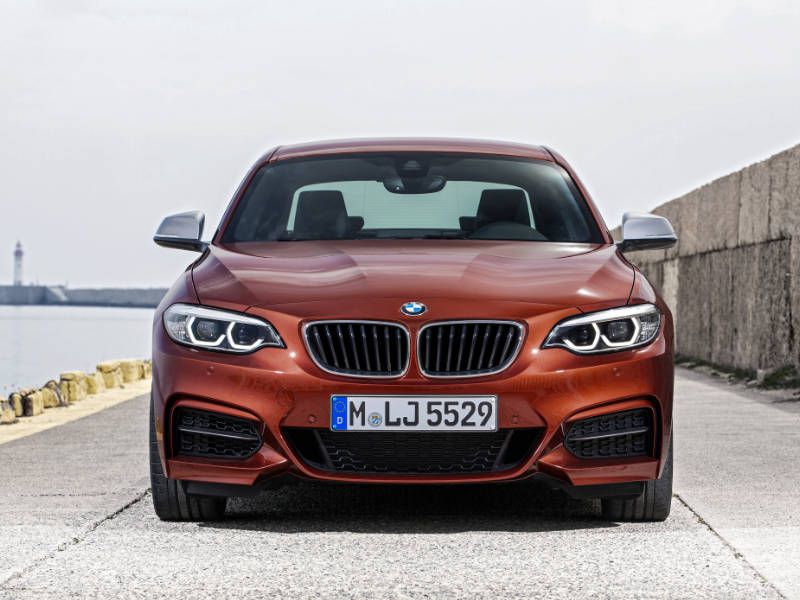
Photo by BMW
Advanced Safety Systems
Tech-based safety systems are extra-cost options on the 2 Series. BMW offers lane-departure warning, Blind-Spot Monitor and a pre-collision system with pedestrian detection that warns if vehicles and pedestrians are in your path. It will also automatically begin braking if it’s a low-speed situation and the system believes an accident is imminent. These systems are part of the Driving Assistance Plus Package, which is quite a bit of technology for $700. Dynamic Cruise Control, which will keep a safe distance from the vehicle ahead, is standard.
Other safety-related optional technology includes Parking-Assist sensors in the front and rear bumpers, a rear-view camera and Xenon headlamps with active leveling and the ability to swivel left or right up to 15 degrees to help you see around corners.
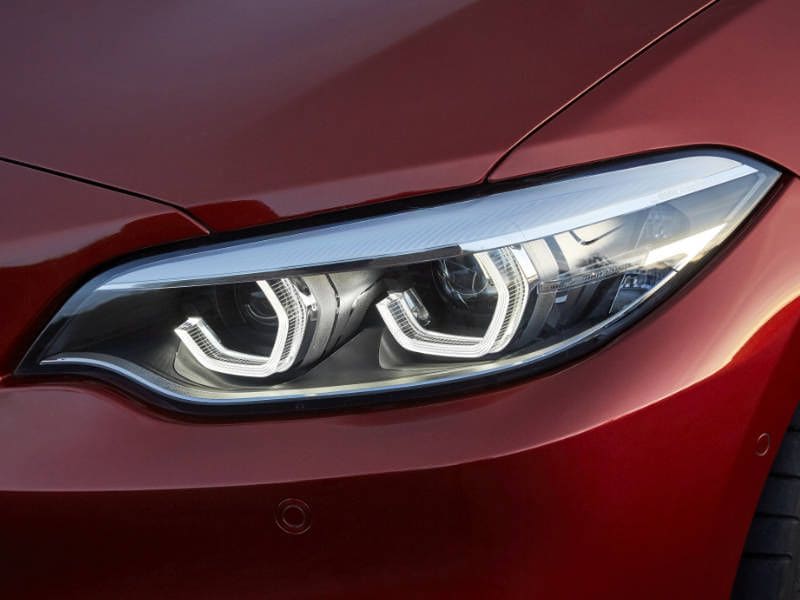
Photo by BMW
Classic Lines
Squint and you can see the classic lines of the BMW 2002 deep inside the new 2 Series. Although the new 2 Series' shape debuted back in 2014, it still looks fresh and its classic long hood, short deck proportions are as timeless as brand’s signature twin-kidney grilles.
Short and squat, the 2 Series isn’t quite as striking as BMW’s longer and lower 4 Series or 6 Series coupes, but it’s attractive from every angle and the convertible looks fantastic with the top stowed under its hard boot. These cars look wide from the rear, just as cars should, and the bulging fenders and four exhaust pipes on the M2 will send a shifter up your spine.
BMW always offers a wide variety of wheel designs, and there are seven different styles available on the 230i. The standard size is 17-inches, but 18-inchers are available and added some attitude to our test vehicle. They not only look better, but the larger tires also add performance.
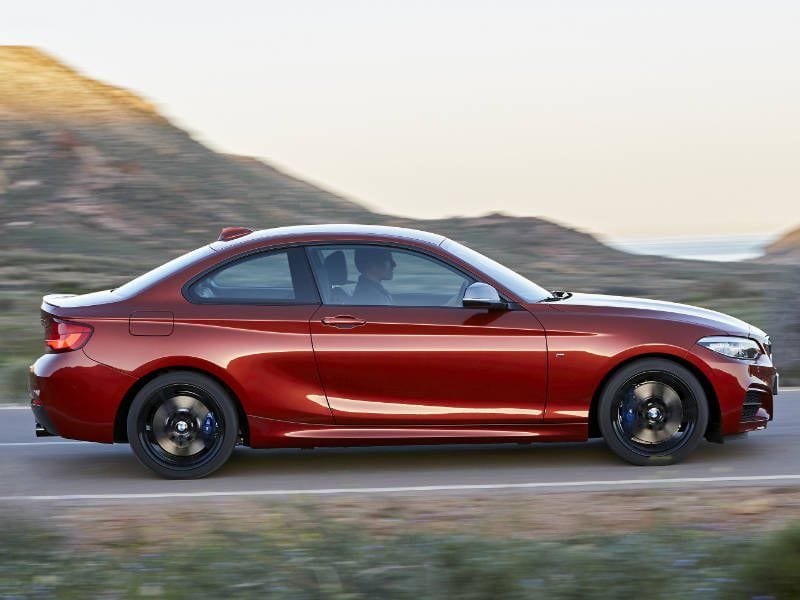
Photo by BMW
Final Thoughts
If you’re looking for a sporty small luxury coupe or convertible, the 2017 BMW 2 Series continues to be a favorite, because it’s comfortable, it performs well and few cars are this fun to drive. It’s also attractive and beautifully put together. Although agile and athletic, when you drive this car, it feels solid, like it’s carved from granite. I like that.
Although some features and safety technology are extra cost options on the BMW, the 2 Series delivers a unique combination of luxury, performance, and style that makes it a very desirable overall choice.
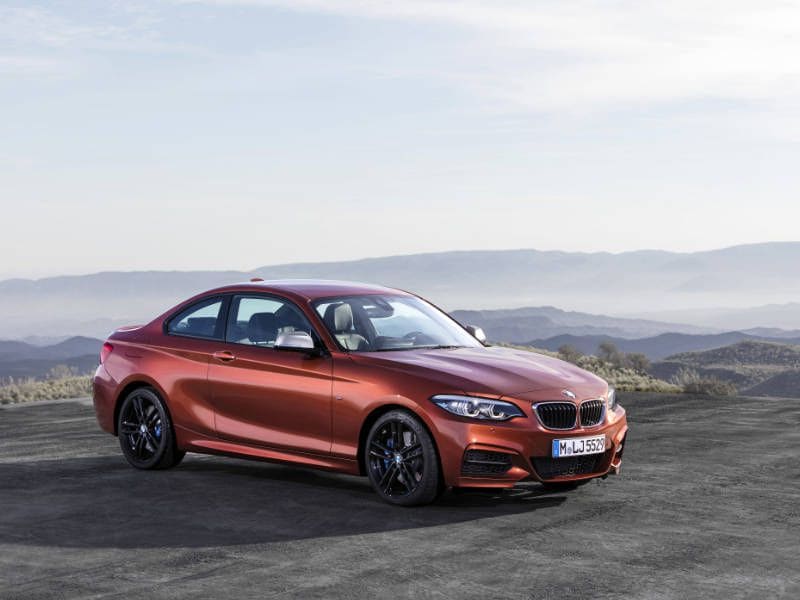
Photo by BMW